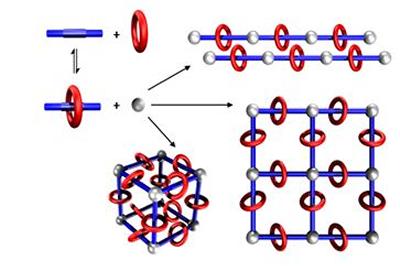Organizing Mechanically Interlocked Molecules to Function Inside Metal-Organic Frameworks Seminar
- Time:
- 15:00
- Date:
- 24 September 2014
- Venue:
- Room 2001, Building 27 Chemistry University of Southampton Southampton SO17 1BJ
For more information regarding this seminar, please email Geoff Hyett at G.Hyett@soton.ac.uk .
Event details
Dr Stephen J Loeb presents a seminar as part of the MAFS Research group's seminar series.
A variety of artificial molecular switches and machines based on the relative motion of the constituent components of mechanically interlocked molecules (MIMs) have been reported over the past few decades.1 However, these and other elaborate molecular systems only operate in solution or in a condensed phase where the molecular devices are randomly dispersed and their motion incoherent. If these tiny devices could be organized in a predictable and orderly manner, the ideas of creating ultra-dense molecular-based memory or controlling electronic properties of materials at the molecular level would be very much closer to realization. One way to achieve a higher level of molecular organization and coherency would be to precisely place the “soft” dynamic molecular components that undergo motion (e.g. rotation or translation) into the pores of metal organic framework (MOF) materials In this way, the “soft” MIM would be clearly separated from the “hard” structural skeleton of the MOF that holds it in place.2 If this could be accomplished, the small size of a MIM unit (~1 nm3) and the regularity of a MOF framework would allow for an incredibly high density of dynamic components in a material: ~1021 per cm3. The ability to arrange mobile and functional molecular components in a highly dense and predictable array is a crucial step towards the generation of solid-state devices with multiple functions and properties. This presentation will describe our newest MOF materials containing MIM linkers capable of rotational and translational motion
Everyone welcome

References
1) a) J. F. Stoddart, Chem. Soc. Rev. 2009, 38, 1802; b) V. Balzani, A. Credi, M. Venturi, 2008, Molecular Devices and Machines – Concepts and Perspectives for the Nanoworld. Wiley InterScience; c) E. K. Kay, D. A. Leigh, F. Zerbetto, Angew. Chem. Int. Ed. 2007, 46, 72; d) A. Coskun, M. Banaszak, R. D. Astumian, J. F. Stoddart, B. A. Grzybowski, Chem. Soc. Rev. 2012, 41, 19; e) C. S. Vogelsberg, M. A. Garcia-Garibay, Chem. Soc. Rev. 2012, 41, 1892.
2) a) H. Deng, M. A. Olson, J. F. Stoddart, O. M. Yaghi, Nat. Chem. 2010, 2, 439; b) V. N. Vukotic, S. J. Loeb, Chem. Soc. Rev. 2012, 41, 5896. c) V. N. Vukotic, K. Zhu, K. J. Harris, R. W. Schurko, S. J. Loeb, Nature Chem. 2012, 4, 456. d) K. Zhu, V. N. Vukotic, C. A. O’Keefe, R. W. Schurko, S. J. Loeb, J. Am. Chem. Soc. 2014, 136, 7403.
Speaker information
Dr Steve Loeb, University of Windsor, Canda. Dr Steve Loeb has a keen interest in mechanically interlocked molecules (MIMs). His chemistry involves developing new supramolecular templating motifs for the formation of interpenetrated host-guest species called pseudorotaxanes and their conversion into permanently interlocked molecules such as rotaxanes and catenanes.